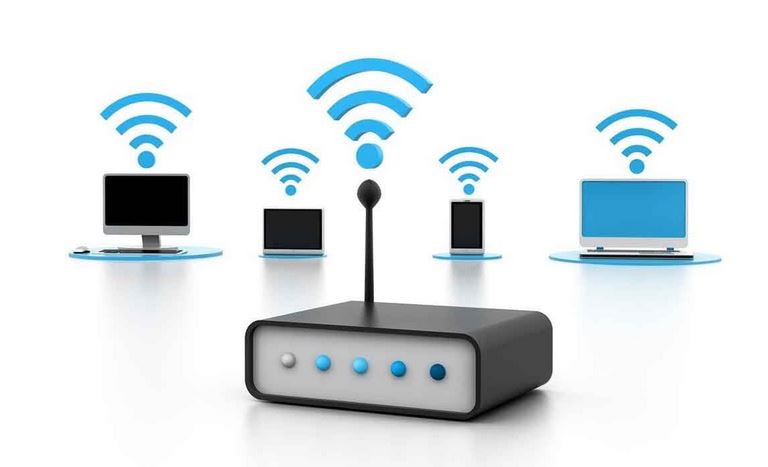🖧 Is it not possible to build networks at the drop of a hat?
Today’s computing environments offer remarkable flexibility. With a server to share resources and workstations to access them, building a network might seem as simple as plugging everything in—but in reality, planning, structure, and strategy are essential for a successful, secure, and scalable network.

🔗 What Is a Network Resource?
In networking terms, a resource refers to any device, file, or service available to users on the network. Common network resources include:
-
Printers
-
File storage
-
Shared applications
-
Databases
-
Backup systems
For example, instead of equipping every workstation with its own printer, an office can centralize printing to a few shared devices—reducing hardware and consumable costs significantly.
💾 Storage and Data Management
Networks allow for centralized file storage, which:
-
Increases available storage space
-
Frees up client computers to perform daily tasks more efficiently
-
Allows administrators to back up data regularly
-
Enables recovery in the event of data loss or hardware failure
-
Provides shared access to important documents (e.g., emergency contact lists, company policies)
Centralizing files on a dedicated server not only improves data availability but also enhances collaboration and disaster recovery.
Centralized Applications
Applications no longer need to be installed individually on each workstation. If the server has the necessary resources, it can host applications, allowing users to access them over the network.
🧾 Note: This often requires a site license, allowing multiple users to access a single installation of a program. Licensing terms vary based on the vendor and the number of users.
🔐 Network Responsibility and Security
Being part of a network means being part of a shared environment. Users must understand and respect their responsibilities:
-
Network security is only as strong as its users
-
Data cannot be deleted or moved at random
-
Emails are not private—management may access messages when necessary
-
Shared printing means jobs may queue; your document might not print immediately
-
If a workstation also functions as a server, it must remain powered on
🧠 Network Operating Systems (NOS)
While personal computers use standard operating systems to manage local files, networks rely on Network Operating Systems (NOS) to manage communication, resources, and data flow.
Popular NOS platforms include:
-
Windows Server 2000 / 2003 / 2008
-
Linux
-
Unix
-
Other vendor-specific systems
Modern NOS platforms can monitor memory, CPU usage, disk space, and connected peripherals automatically—no full-time operators required, unlike early mainframe systems.
🌐 The Power of LANs and WANs
With Local Area Networks (LANs) and Wide Area Networks (WANs), users can now:
-
Chat in real-time with colleagues across the globe
-
Print documents remotely (e.g., from Milwaukee to California)
-
Access and troubleshoot remote systems
-
Replace outdated communication tools like floppy disks and phone messages
This level of interconnectivity and efficiency is made possible by today’s robust NOS capabilities.
🗂️ Access Models: Peer-to-Peer vs. Client-Server
There are two primary resource-sharing models in network design:
1. Peer-to-Peer Model
-
Best for small, simple networks
-
Supported by operating systems like Windows XP, Vista, Linux, and macOS
-
Also known as workgroups
-
No centralized administration
-
Each workstation manages its own resources
Pros:
-
Quick and inexpensive to set up
-
Minimal hardware required
Cons:
-
Poor scalability
-
Lack of central control = weaker security
-
Difficult to manage or locate resources
-
Each user also acts as an administrator, requiring more training
This model is only advisable for very small businesses that don’t anticipate growth—such as a small subsidiary or a specialized team with limited users.
⚠️ Choosing a peer-to-peer model solely for its low cost can be a costly mistake in the long run if your business expands.
2. Client-Server Model
-
Ideal for growing or large organizations
-
Centralized resource management via a dedicated server
-
Easier to back up data, enforce security, and manage users
Though it requires a higher initial investment, the client-server model offers long-term flexibility, performance, and scalability.
🧩 Planning a Network: Key Questions
Before implementing any network, ask:
-
How many users will connect?
-
What resources will be shared?
-
How important is data security?
-
Will the company grow in the future?
-
What kind of administrative control is needed?
Proper planning ensures the selected architecture will not only meet current needs but support future expansion with minimal administrative overhead.
Final Thoughts
Creating a functional, secure, and efficient network takes more than plugging in devices—it requires foresight, planning, and selecting the right architecture. Whether you’re starting small or preparing for expansion, choosing the correct resource-sharing model and understanding how data is managed will set the foundation for a network that meets your needs today—and tomorrow.
